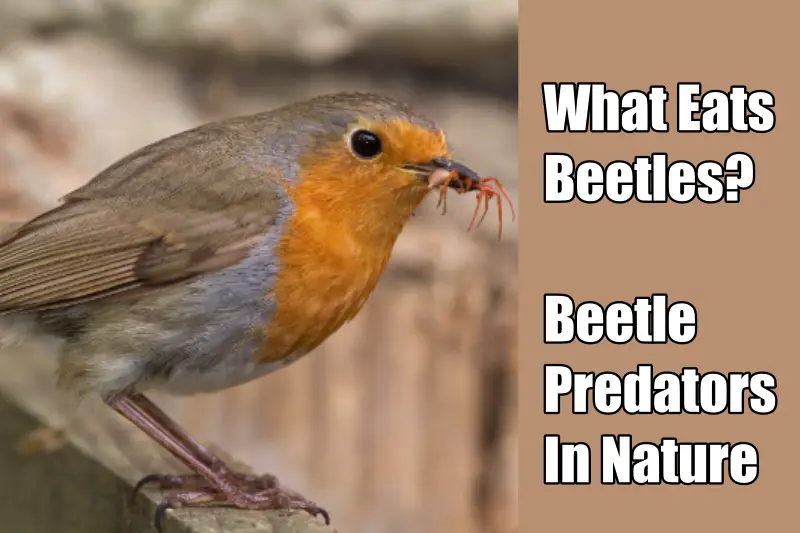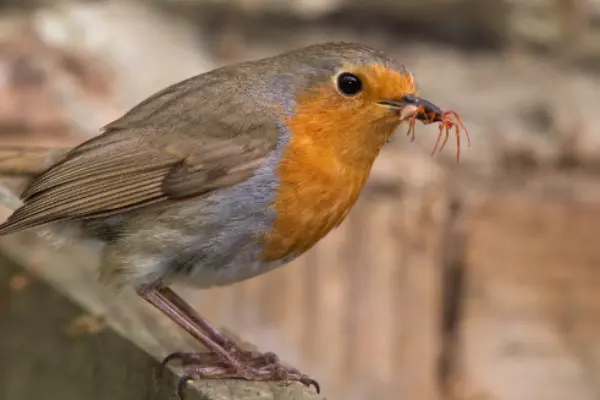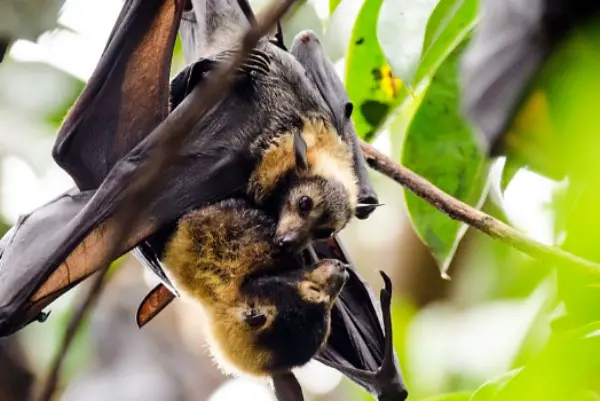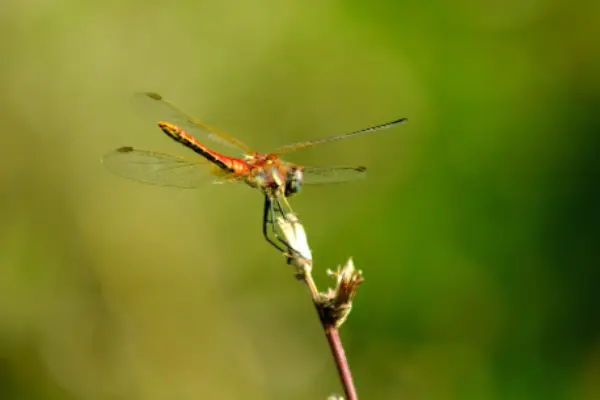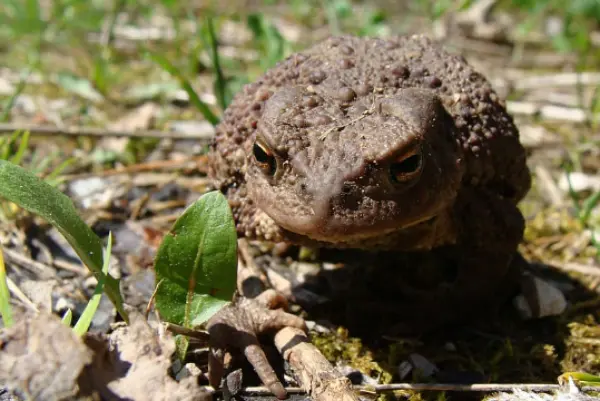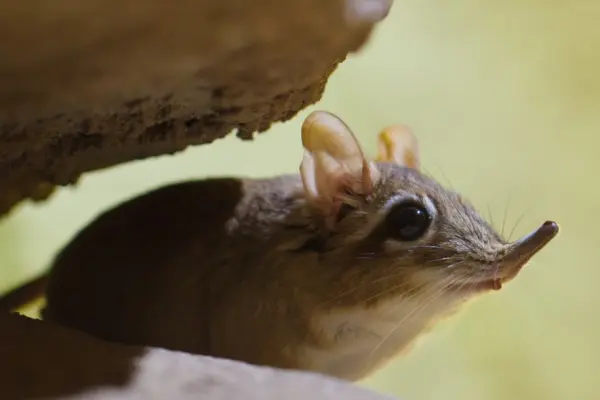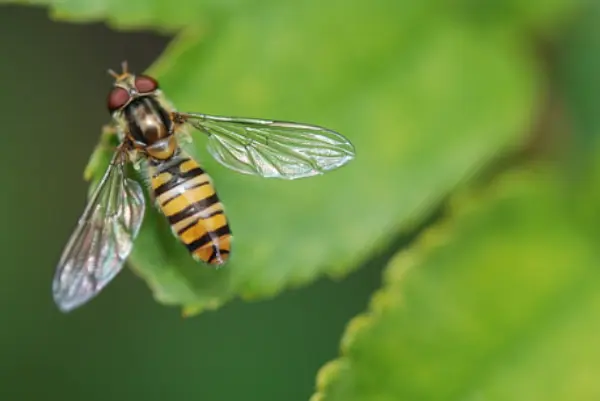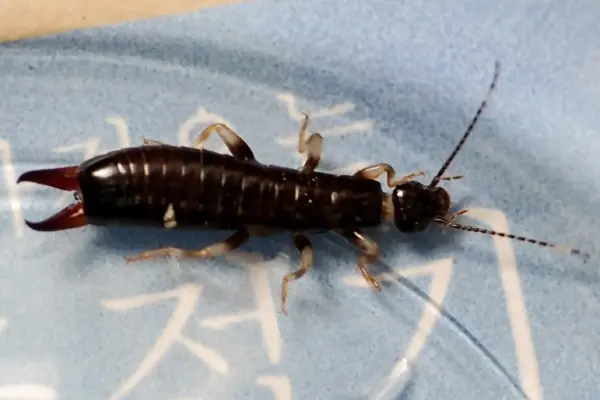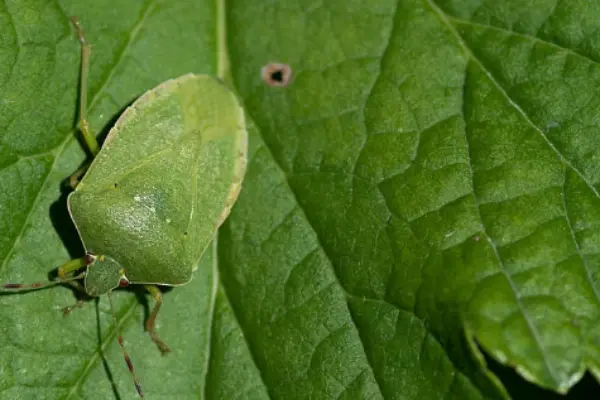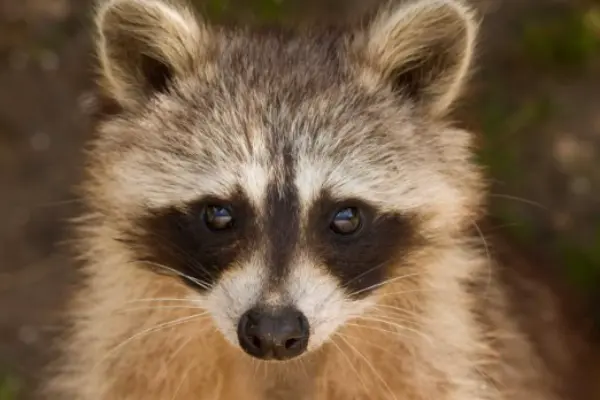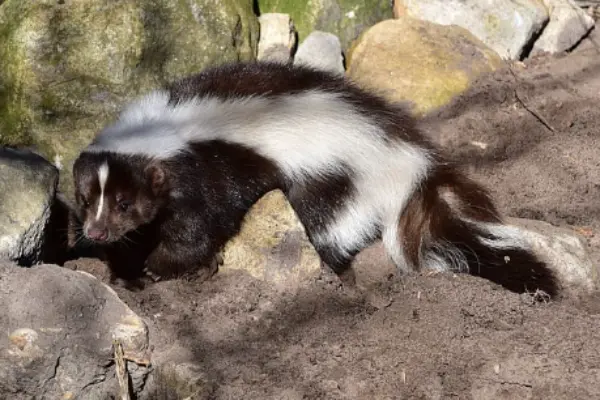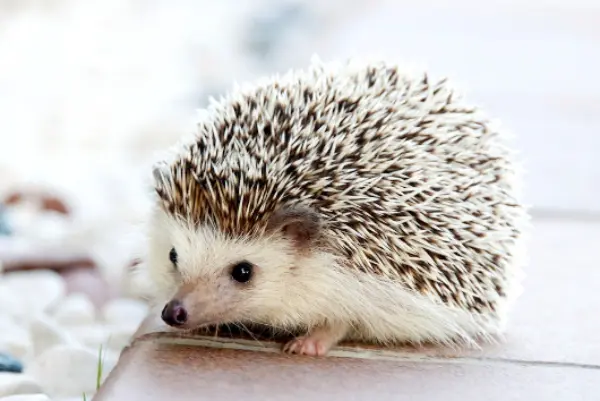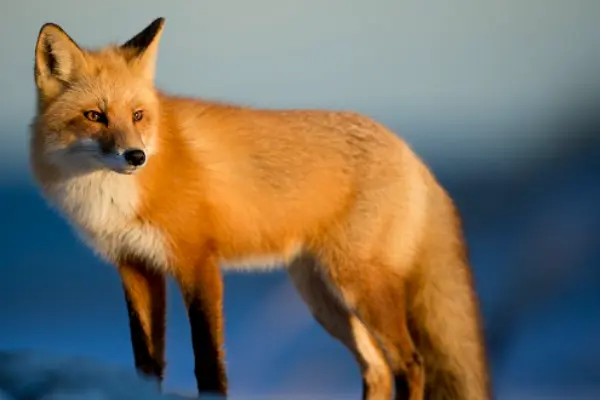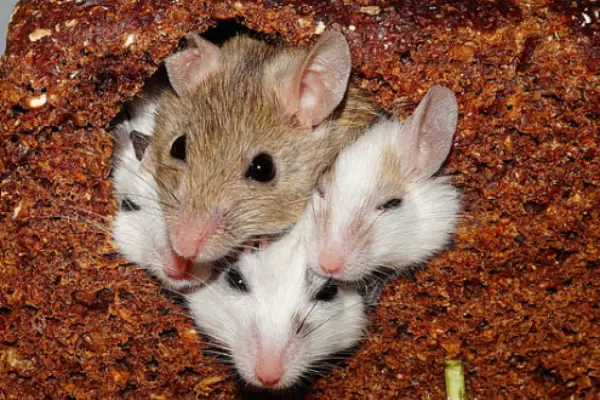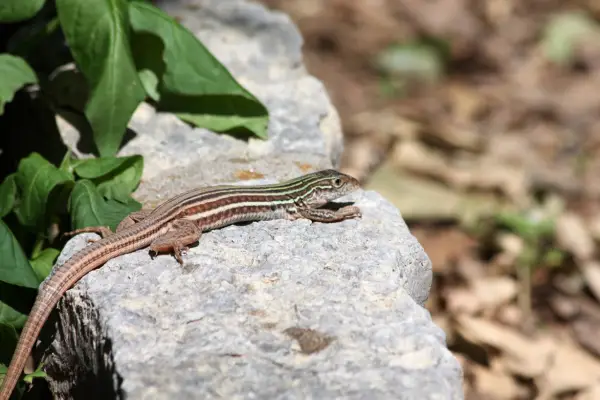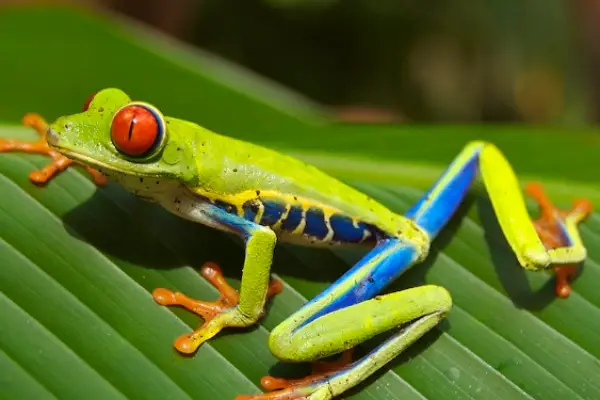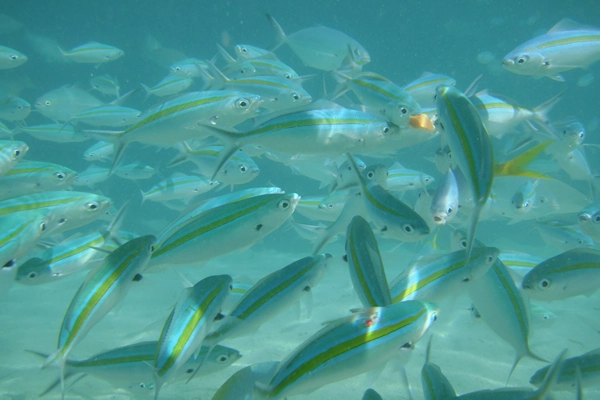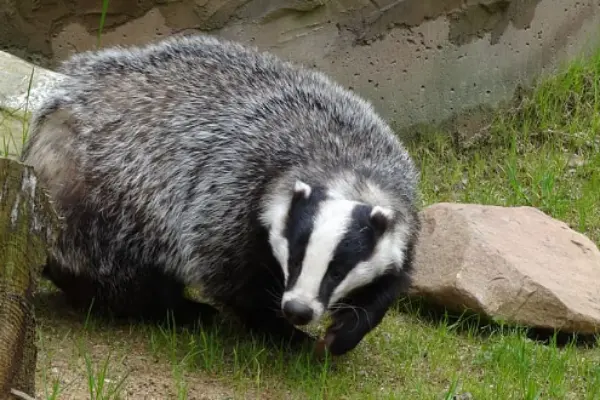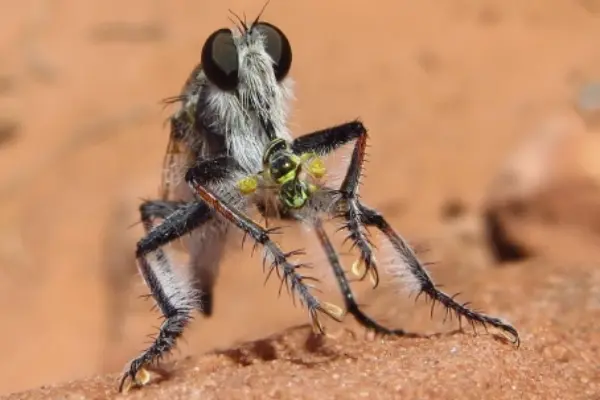Beetles are the most abundant insects in the world. In fact, every 4th insect you count belongs to the order Coleoptera, a fascinating beetle. But even their minute size cannot betray the eyes of predators. Like the population of beetles, animals that eats beetles are also plentiful.
The beetles’ varied habitat and ability to survive practically anywhere deserve a lot of credit for this. 28% of all living things are beetles. So, let’s find out which species consume beetles and for what nutritional purposes.
What Makes Beetles A Worthy Prey? (Nutrients)
Due to their high vitamin B12 content, critical minerals like potassium, calcium, phosphorus, magnesium, manganese, iron, zinc, fiber, essential amino acids, omega-3 and omega-6 fatty acids, and antioxidants, edible insects like beetles may offer exceptional health advantages.
Beetles have a higher iron content than some other insects, such as the pupae of silkworms. Hence, such nutritional factors make the beetles good prey for animals to fulfill much of their dietary requirements.
What Eats Beetles?
Many animals eat beetles as part of their diet. Among the predators of general bugs and insects, beetles are the favorite food for some animals. Here’s a list of 25 animals that eats beetles.
1. Birds
| Class | Aves |
| Size | 5.5cm to 2.8m |
| Other diet | Seeds, fruits, insects, grain, larvae, etc. |
Birds are common beetle hunters, mostly because of their habitat. The adult beetles are frequently targeted by Meadowlarks, Cardinals, and Catbirds as a food source. Both the adult and larval beetles are heavily preyed upon by starlings and grackles.
Crows and gulls are two more species that eat the grubs of Japanese beetles. The yellow-headed blackbird, among other birds, has a particular taste for ground and leaf beetles. While the starling is regarded as one of the Japanese beetle’s finest flying enemies.
2. Bats
| Order | Chiroptera |
| Size | Can be up to 2 meters |
| Other diet | Mostly flying insects |
A few species of beetle are naturally threatened by bats. By eating the insects that pests leave behind, insectivorous bats maintain environmental equilibrium in urban and agricultural settings.
Urban-associated insects like mosquitoes, flying termites, moths, and beetles are the common meals of bats. Japanese beetles and cucumber beetles are two of the most prevalent that they prefer.
3. Dragonflies
| Infraorder | Anisoptera |
| Size | Wingspan can be up to 2-5 inches |
| Other diet | Flying insects like moth, small butterflies, etc. |
Flying insects are preferred by adult dragonflies to eat. This includes mayflies, gnats, and mosquitoes. They will, however, also consume bees, flies, moths, butterflies, and beetles of course.
An adult dragonfly will consume nearly any insect it can grab as long as the other bug is smaller. They will actually also take smaller dragonflies and butterflies.
Usually, a dragonfly would catch its prey in midair while using its lengthy legs to do it. After that, the meal will be taken to a ledge where it will be consumed.
Although dragonflies consume other live insects as adults. They don’t have a picky mouth. Any insect they can catch will be consumed.
4. Toads
| Family | Bufonidae |
| Size | 2-25cm |
| Other diet | Insect larvae, slugs, spiders, and worms |
Being natural predators of slugs, worms, spiders, and insect larvae, toads pose a threat to beetles too. Toads might not always enjoy them as their meal of choice, though.
However, they continue to devour whatever beetle they come upon. They also have an impulse to indiscriminately grab hold of everything manageable in size.
5. Moles
| Family | Talpidae |
| Size | 5-7 inch |
| Other diet | Earthworms, grubs, snails, spiders, small animals, and other insects |
Moles have a craving for various insects and invertebrates that they find in their tunnels. Snails, slugs, ants, beetles, spiders, centipedes, and millipedes are some of the common foods they consume.
Because moles do not hibernate during the winter, they must hunt year-round. Moles are insectivores, which means that they eat both living insects and their larvae, including the grubs of the Japanese beetle, and earthworms.
Moles in your yard are a sign that many insects, both wanted and unwanted, are present everywhere around your house.
6. Shrew
| Scientific name | Sorex araneus |
| Size | 48-80mm |
| Other diet | Insects, slugs, spiders, worms, amphibians and small rodents |
An insect of any kind, including ants, beetles, worms, moths, snails, slugs, and more, is a good feast for hunter shrews. Their main diet consists of insects and other invertebrates, although they also consume small vertebrates, seeds, and mushrooms.
Old World water shrews (genus Neomys) and North American short-tailed shrews (genus Blarina) create toxic saliva to paralyze prey.
Being insectivores, it is their general behavior to eat creepy crawlies like ants, beetles, worms, moths, and slugs. Hence, as a matter of fact, shrews assist farmers by consuming several pests that ruin crops.
7. Hoverfly
| Scientific name | Allograpta obliqua |
| Size | 1/8 to 1 inch |
| Other diet | Nectar and pollen |
Even though they are frequently mistaken for bees, hoverflies are beneficial to have in your garden since they consume leaf beetles, one of their main food sources, in addition to pollinating your plants.
Those nasty fly larvae use their jaws to seize the prey, hold them up in the air while sucking out the contents of their bodies, and then throw away the exoskeleton.
8. Parasitoid wasps
| Scientific name | Encarsia formosa |
| Size | 1 ½ inch long |
| Other diet | Nectar, pollen, and honeydew |
It has been demonstrated through research that parasitoid wasps regulate the population of leaf beetles. This answers the question, “What eats beetles,” in a logical manner. Wasps’ ability to eliminate the early stages of a leaf beetle invasion is one of the reasons they are so successful.
By actually laying their eggs within the leaf beetle larvae, wasps increase their own population while reducing that of the leaf beetle. Additionally, these tiny insects don’t sting!
How do parasitic wasps eat? Aphids, caterpillars, beetles, and flies are all on the menu for these tiny, delicate insects. When parasitic wasps lay their eggs inside an insect, either an adult or a larva, the offspring then feed on the paralyzed host insect, which may result in the host insect’s death (assuming it did not already die when the wasp paralyzed it).
9. Earwig
| Scientific name | Forficula auricularia |
| Size | 1 inch |
| Other diet | decaying plant matter, fruits, vegetables, and insects like aphids, mites, and small caterpillars |
Earwigs are excellent natural predators of leaf beetles as they like to be omnivorous and consume other insects. They can also be drawn to common flowering plants in gardens, which complicates matters.
They frequently eat small spiders, mites, maggots, and beetle larvae. In fact, earwigs will consume other earwigs. They also consume organic matter that is decomposing.
If they are unable to find these to eat, they will start to graze on living plants, which frequently results in unintended harm, making them more of a pest in gardens.
10. Stink Bug
| Scientific name | Halyomorpha halys |
| Size | 5/8 inch long |
| Other diet | apples, peaches, berries, peppers, beans and pecans |
Stink bugs are a great choice as an adult leaf beetle’s natural predator, according to University of Florida experts. They like in particular the cottonwood leaf beetle, which is more prevalent in warmer areas. Individual coloration may vary, with some bugs being various shades of red, grey, light brown, copper, or black.
11. Raccoons
| Scientific name | Procyon lotor |
| Size | 24 – 38 inch |
| Other diet | Crayfish, frogs, fish, snails and clams. They also enjoy insects, eggs, fruits, vegetables, nuts and even dead animals |
Truly omnivorous, raccoons consume a variety of items such as nuts, seeds, fruits, eggs, insects, frogs, and crayfish. But out of everything, their preferred food is beetle.
More specifically, Japanese beetles make up a significant portion of the raccoon’s diet.
12. Skunks
| Family | Mephitidae |
| Size | 47 to 82 cm |
| Other diet | insects, larvae, earthworms, grubs, rodents, lizards, salamanders, frogs, snakes, birds, moles, and eggs. They also commonly eat berries, roots, leaves, grasses, fungi and nuts |
The diet of a skunk mostly depends on what is available. A skunk’s main food sources in the spring and summer are grasshoppers, bees, beetles, beetle larvae, and crickets.
Skunks will scavenge for fruit, nuts, bird seed, and pet food during the fall and winter months when there is a lack of food.
Mice, moles, voles, rats, birds, their eggs, and carcasses are a few of their favorite foods while they also enjoy eating crickets, beetles, and beetle larvae. Skunks also consume trash, birdseed, pet food, fruits, nuts, and garden produce.
hey also scavenge. In the spring and summer, when their primary food source, insects, are more readily available, they consume significantly more animal matter.
13. Hedgehogs
| Scientific name | Erinaceus europaeus |
| Size | 150-300mm |
| Other diet | Beetles, Earwigs, Caterpillars, Earthworms, Millipedes, Fly larvae. |
One can question the existence of any predators for stag beetles at all. However, among some other creatures, hedgehogs think stag beetles are worth a try for the meal.
The most vulnerable time in the beetle’s life cycle, when adults are attempting to mate and lay eggs, is when the hedgehogs tend to attack them.
14. Fox
| Scientific name | Vulpes vulpes |
| Size | 90–105 cm |
| Other diet | rabbits, rodents, birds, frogs, earthworms, carrion |
Foxes are omnivorous and opportunistic animals that will consume practically everything, including beetles, small mammals, rodents, and frogs. They thrive in cities as well, and they naturally consume stag beetles, which is unpleasant.
They eat insects like beetles, caterpillars, crickets, and the larvae of these insects. Foxes even enter beehive hives to steal honey and grubs. Additionally, they will consume the birds that consume the same insects.
15. Kinkajous
| Scientific name | Potos flavus |
| Size | 82 and 133 cm |
| Other diet | fruit and nectar. |
Kinkajous get a lot of their protein from insects. Since they are omnivores and need a balanced diet with both protein and carbohydrates, this is particularly crucial for them.
Beetles, ants, termites, and grasshoppers are a few of the most typical insects that kinkajous consume.
The kinkajou eats fruit, but it also possesses a tongue that is particularly long and may be used to eat insects like beetles.
16. Snakes
| Suborder | Serpentes |
| Size | 4.1 inch-22.8feet |
| Other diet | Some eat warm-blooded prey (e.g., rodents, rabbits, birds), while others eat insects, amphibians (frogs or toads), eggs, other reptiles, fish, earthworms, or slugs |
Snakes are one of those creatures that, despite widespread terror, have a positive impact on the natural environment. Crickets, ants, grasshoppers, caterpillars, spiders, pillbugs, moths, cockroaches, and grubs, particularly beetle grubs, are a few of the most typical insects that snakes consume.
Venomous snakes bite their victim to ingest it, and their fangs inject a toxin that triggers the prey’s digestion and breaks down its red blood cells. Additionally, the prey is subdued throughout this procedure, which aids the snake’s ability to gulp the meal whole.
Although all snakes are carnivores, their food varies according to their habitat. Insects make up the majority of the diet of snakes, particularly green snakes.
17. Rodents
| Order | Rodentia |
| Size | 18-62 cm |
| Other diet | Plant foods like seeds, grains, and small fruit. |
Because they are small and typically simple to locate and capture, beetles and their larvae make excellent examples of prey for mice and rats. Whatever they come across that is nourishing, they eat.
Due to the high protein content, rats have good reasons to consume bugs, grasshoppers, beetles, caterpillars, cockroaches, and other insects. However, rats have preferences just like all omnivores do.
Typically, rats enjoy eating seeds, fruits, and nuts. If the food is sweet, they are more likely to be interested in it. If plant-based snacks like peanut butter are available, rodents will not actively seek out insects to eat.
18. Lizards
| Suborder | Lacertilia |
| Size | 2 cm-10 feet |
| Other diet | Crickets, fruit flies, morio worm (superworm), blowfly larvae, and other insects |
Adult lizards frequently consume beetles, but they much prefer softer worms and insects like sowbugs. Some lizards are carnivores, which means they consume both living things and inanimate objects. Lizards naturally prey on Tenebrio molitor beetles, according to ecological records.
Common reptile feeds include super worms and mealworms, however, they are only larvae. What about beetles, their adult form? In fact, both insectivorous and omnivorous lizards appear attracted to the way beetles crawl and seem to get more thrilled by a scuttling beetle than a worm.
Additionally, they give some excellent nourishment, according to this study: 26% protein, 7% fat, 2% ash, and 61% moisture.
In simple words, mealworm beetles are leaner feeders because they have higher protein and lower fat content than larvae. Furthermore, they are probably more abundant in important minerals like calcium due to their higher ash content.
19. Frogs
| Order | Anura |
| Size | 6 – 9 cm |
| Other diet | Insects and small plant matters. |
What would your first thought be if asked what frogs eat? Probably an insect. Hence the wild toads in your yard like to eat bugs and almost always appear among what eats beetles.
All frog species consume a wide range of insects, including termites, ants, beetles, wasps, cockroaches, grasshoppers, crickets, and spiders. Normally, frogs will consume any live bugs that are present in their immediate habitat.
Because they are carnivores, frogs will typically eat any moving insects that are small enough to fit in their mouth.
Large frogs mostly eat beetles as snacks. Large frogs can eat both slimy and juicy grubs like beetle larvae and small, crisp grubs like mealworms.
20. Fishes
| Subphylum | Vertebrata |
| Size | 10 mm- 60 feet |
| Other diet |
Annelid worms, marine snails, mussels, clams, squids, crustaceans, insects, birds, amphibians, small mammals, and other fishes.
|
The Peanut Beetle is often the most overlooked option available as fish food as it is primarily used for reptiles. When fed to fish properly, this diet is high in protein and excellent for raising young fish.
Due to the bean beetle’s nutritional benefit to fish, it is also used as fish food. Aquatic insects, terrestrial insects, insect larvae, and insect pupae are the main sources of food for insectivorous fish. Hence, we include fish in our list of-what eats beetles?
21. Reduviid bugs
| Family | Reduviidae |
| Size | 12 – 36 mm |
| Other diet | vertebrate blood. |
The Assassin bug is another name for it. The majority of assassin bugs eats beetles (leaf beetle, most probably) and other insects including caterpillars, and sawfly larvae, as well as the adults and nymphs of other true bugs.
Although it consumes a wide variety of insects, it likes soft-bodied prey like caterpillars and tiny insects like green mirids. With stylet-like mouthparts, it stabs its target and injects an enzyme that dissolves the internal organs. The remaining liquid substance is sucked out, leaving an empty shell in its place.
22. Badgers
| Scientific name | Meles meles |
| Size | 56-81 cm |
| Other diet |
Earthworms, frogs, small mammals, birds, eggs, lizards, insects, bulbs, seeds and berries.
|
Badgers primarily enjoy eating beetles living in the ground and plant layers. The ratios of the ecological (habitat) groups and size classes of the insects ingested by badgers and those trapped in pitfall traps were different.
This is based on entomological techniques in addition to pitfall-trap census data for determining the availability of insects for badgers.
In addition to pig-nut tubers, dung, and insects like bark beetles, badgers will consume a wide variety of fungi. But we clearly see their sorted priority list.
23. Ants
| Family | Formicidae |
| Size | 0.75-52 mm |
| Other diet | Leaves, seeds, small insects, nectar, and honeydew |
Ants? Seem like a stranger on the list of what eats beetles because they are obviously huge. And because it’s easy to see the ants consuming other sweet things wherever they can find them, along with the nectar from flowers.
However, they are also frequently observed transporting dead insect corpses that can be 50 times larger than themselves.
Beetles then enter the picture. The ants hunt other creatures and insects for food to supplement their meals with some protein.
Worker ants consume a wide variety of insects, such as flies, beetles, and caterpillars. They also consume other dead invertebrates like millipedes and spiders.
However, beetles can also similarly prey on ants. Ants are regularly consumed by beetles.
24. Spiders
| Order | Araneae |
| Size | 0.5 – 90 mm |
| Other diet |
primarily on insects, some large spiders have been known to eat worms, snails, and even small vertebrates like frogs, lizards, birds, and bats.
|
Spiders among the list of what eats beetles? Not surprising, even though some beetle species are larger than them. But spiders do eat carpet beetles. They are one of the creatures that consume beetles, including their eggs, larvae, and pupae.
Spiders are excellent pest eaters. Unless they are specifically equipped for it, they usually reject hard-bodied prey. Venom from spiders can either kill or paralyze their prey. They engage in active hunting or construct webs that trap tiny vertebrates as well as insects.
25. Robber flies
| Family | Asilidae |
| Size | 3-50 mm |
| Other diet | Flies, beetles, butterflies, moths, bees, wasps, ants, grasshoppers, crickets, lacewings, dragonflies, damselflies and mayflies. |
The term “robber flies” refers to these skilled predators, which primarily or solely prey on other insects. They typically wait in ambush and seize their prey in midair. They occasionally capture spiders and other ideal prey.
As opportunistic predators, robberflies typically hunt on other robberflies as well as butterflies, moths, dragonflies, grasshoppers, and true bugs up to the size of cicadas, bees, and wasps.
Robber flies consume other insects throughout all life stages, including larvae and adults. Given that their prey species include flies, beetles, butterflies, moths, bees, wasps, and ants, it appears that they consume anything that they can catch.
How Do Beetles Defend Against Predators?
Beetles employ a variety of defensive techniques. They conceal themselves from predators using camouflage to blend in with their surroundings. And, sometimes, To trick enemies, they mimic the color and shapes of other insects. While A few, however, are toxic. Being an absolutely minuscule yet marvel of a creature beetles surely astonish us with their various survival tactics around this diverse nature.
Camouflage
Many creatures have adopted it as a common defensive tactic. In a nutshell, camouflage is the ability to blend in with the environment so that an animal is difficult to spot by predators.
Chemical Defenses
Chemical defense is another super common strategy used by many tiny animals and insects to ward off predators. In response to danger, they emit compounds that ward off predators. These substances can be poison or chemicals that give off unpleasant odors.
The Japanese beetle, for instance, secretes a fluid from its joints that repels many predators and causes them to think twice about biting.
Elytra Plays A Major Role
One of the main factors in beetles’ successful diversity and survival in ecosystems all over the world is their elytra, or strong exoskeleton, an exclusive adaptation that developed from wings.
Conclusion
Beetles are the most abundant insects on earth. This reason itself makes them very vulnerable and frequently available prey. They are the feast for many birds, animals, and even insects. Snakes, rodents, raccoons, and foxes are the animals what eats beetles.
Apart from them, ants, spiders, birds and dragonflies also eat beetles. The list may go longer, but these 25 animals on this list are the most frequent predators of beetles.
Frequently Asked Questions
Q1. Who preys on beetles?
Ans. There are plenty of animals that eat beetles. The natural predators of beetles include snakes, birds, toads, and a few massive bugs like wasps and flies.
Q2. What do beetles eat?
Ans. Beetles eat almost anything, including pollen, plants, other insects, dead animals, and manure. Certain water beetles consume small fish, tadpoles, and sometimes even snails. Fun fact: To find food, most beetles have an excellent sense of smell.
Q3. Are beetles aggressive?
Ans. Not only do beetles not bite, they never suck blood from humans, nor do they spread diseases. Certain species, like blister beetles, are toxic. While others, like Longhorn beetles and root borers, can bite but do not inflict serious injury. They, therefore, have excellent unique traits and a pretty wide diversity. So, we can easily conclude that they are non-aggressive and pretty reclusive creatures.
Also Read:

Anjali Prasad, a B. Pharm. graduate who works as a content writer for HowItSee, is based in Delhi. Except for her, not many people take the typical road from healthcare to writing. Her love of writing stemmed from her involvement in the college literature society and her early journaling at the age of 7. Hence, the love of learning and the spirit of exploration are what drew her to this career. You can find her on common social media like Instagram.
